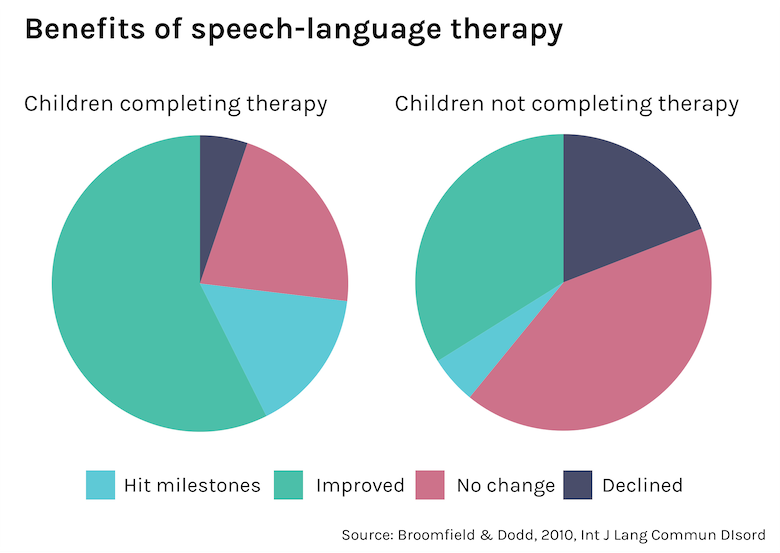How common are speech delays?
When you start to suspect that your child has a speech or language delay, it can be an emotional roller coaster. And, searching for answers online often leads to more questions—leaving you confused and wondering what to do next. But if you’re feeling anxious, guilty or isolated, know that you’re not alone.
When we connect with parents in this situation, we often hear them say they feel shame and embarrassment about their little one’s delay. While it’s common (and natural) to feel all these emotions, here’s what you should know: speech and language delays are common, they’re not your fault—and there are proven methods you can use at home to help get your child on track. Here’s what the science tells us.
Delays might be more common than you think.
About 7-8% of children in the United States have a speech or language delay. And, in a screening of kindergarten children, the prevalence of delays was 8% in boys and 6% in girls. While it’s slightly more common for boys than girls, the takeaway is that many, many children will experience a delay.
Delays and disorders show up in different ways.
In little ones who are not vocalizing, it’s often difficult to determine if the delay is a speech disorder a language disorder, or both. While these terms are often used interchangeably, they mean different things. Understanding exactly what’s happening with your child is the first step.
Speech disorders occur when a child has difficulty producing sounds. This includes speech sound disorders, voice disorders and stuttering.Around 15-16% of 3-year-olds and 4% of 6-year-olds have speech disorders. That’s because children are often diagnosed when they start school, and a delay is flagged to parents by educators. The good news? When the delay is addressed early, children often make progress.
Language disorders occur when a child has difficulty interpreting language, which makes it difficult for them to understand and communicate. Language disorders are split into two categories: expressive and receptive. A child with a receptive language disorder has trouble understanding language, while those with expressive language disorders need help communicating. Anywhere from 6-15% of children have language delays.
It’s natural to worry—but there are solutions.
While many young children naturally catch up when they have a delay, 20-30% do not. The good news is that therapy is effective in helping children work through their speech and language delays and disorders. Research shows that children are more likely to see improvements with speech and language therapy.
In fact, the benefits of speech and language therapy are significant: in one study, 73% of speech-language delayed children who received therapy reached the milestones for their age or showed improvement, compared to 39% of children who did not receive therapy.
Looking for solutions to your little one’s speech or language delay can feel daunting. But, the first step can be simple: reaching out to an expert for an evaluation. At Babbly, we offer virtual evaluations where we can identify your child’s needs. And our virtual coaching sessions let you work one-on-one with an experienced speech therapist to prepare your child for school and activities they love.
Reference:
Bishop, D. V. M. (2010). Which neurodevelopmental disorders get researched and why? In PLOS ONE, (Vol .5, No. 11, Article e15112).
Broomfield, J., Dodd, B. (2010). Is speech and language therapy effective for children with primary speech and language impairment? Report of a randomized control trial. In International Journal of Language & Communication Disorders, (Vol. 46, No. 6, pp. 628-640).
Heidlage, J. K., Cunningham, J. E., Kaiser, A. P., Trivette, C. M., Barton, E. E., Frey, J. R., & Roberts, M. Y. (2020). The effects of parent-implemented language interventions on child linguistic outcomes: A Meta-Analysis. Early Childhood Research Quarterly, 50, 6-23.
Law J, Boyle J, Harris F, Harkness A, Nye C. (2000). Prevalence and natural history of primary speech and language delay: Findings from a systematic review of the literature. In International Journal of Language & Communication Disorders. (Vol. 35, No.2, pp. 165–188).
Norbury, C. F., Gooch, D., Wray, C., Baird, G., Charman, T., Simonoff, E., Vamvakas, G., & Pickles, A. (2016). The impact of nonverbal ability on prevalence and clinical presentation of language disorder: Evidence from a population study. In The Journal of Child Psychology and Psychiatry, (Vol. 57, No. 11, pp. 1247–1257).
Tomblin, J. B., Records, N. L., Buckwalter, P., Zhang, X., Smith, E., & O'Brien, M. (1997). Prevalence of specific language impairment in kindergarten children. In Journal of Speech, Language, and Hearing Research (Vol. 40, No. 6, pp. 1245–1260).

